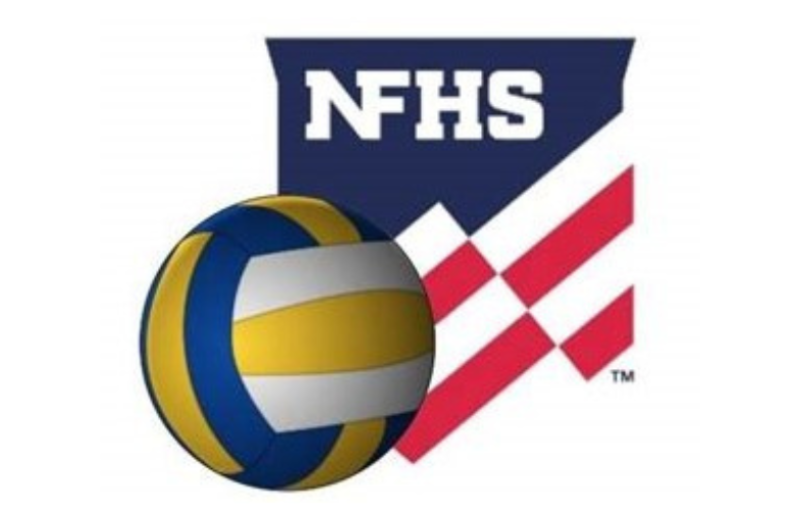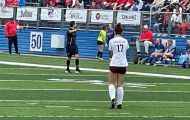
2020-2021 NFHS RULES CHANGES
Here is a recap of the 2020‑2021 NFHS Soccer Rules changes:
2‑2‑4 SECTION 2 BALL SPECIFICATIONS:
ART. 4…If the ball becomes deflated during play, it is declared dead where it was last played and the game is resumed by a drop ball between any two opposing players at the spot where it was last played. If the ball becomes deflated within the goal area, then the ball is dropped between two opposing players subject to the provisions of Rule 9‑2‑2 and 9‑2‑3. Ball deflated during a penalty kick results in retaken kick.
Rationale: The provisions for a drop ball have changed, refer to 9‑2.
4‑1‑1a SECTION 1 REQUIRED EQUIPMENT:
ART. 1a…The visiting team shall wear solid white jerseys and solid white socks, and the home team shall wear dark jerseys and socks (dark is defined as any color which contrasts with white). Prior to and during the game, jerseys shall be tucked into the shorts, unless manufactured to be worn outside.
Rationale: Manufacturing practices have changed.
4‑2‑7e, f SECTION 2 OTHER EQUIPMENT:
ART. 7…A tooth and mouth protector (intraoral), if worn, shall:
e. not to be completely white; and
f. not to be completely clear.
Rationale: SMAC no longer recommends the mouth protector meet these two criteria; dropping these two requirements brings soccer in line with the other sports that allow mouth guards.
9‑1‑1b SECTION 1 BALL IN AND OUT OF PLAY:
ART. 1…The ball is out of play when:
a. it has completely crossed the goal line or touch line, whether on the ground or in the air;
b. the ball touches an official and remains on the field; and
1. a team starts a promising attack;
2. goes directly into the goal;
3. possession changes
Rationale: This is to address situations where the ball touches a referee and a team gains an advantage.
SECTION 2 DROP BALL:
ART. 1…The game is restarted with a drop ball:
a. when the ball is caused to go out‑of‑bounds by two opponents simultaneously;
b. when the ball becomes deflated; (2‑2‑4)
c. following a temporary suspension of play for an injury or unusual situation; (except as noted in 14‑1‑7) and the goalkeeper is not in possession of the ball.
d. when simultaneous fouls of the same degree occur by opponents; or
e. when the ball touches an official as per 9‑1‑1b.
Rationale: This proposal prevents an opponent from gaining an advantage.
9‑2‑3 SECTION 2 DROP BALL
ART. 3…The ball is dropped by an official from waist level to the ground. The referee drops the ball to one player of the team that last possessed the ball at the position where it was last touched by a player(s), an outside agent or match official. If when play was stopped, the ball was in the penalty area or the last touch, by either team, was in the penalty area, the ball is dropped to the defending team’s goalkeeper with all opposing players outside the penalty area. In all cases, all other players must remain at least 4 yards from the ball until it is in play. Any number of players may contest a dropped ball (including the goalkeeper); a referee cannot decide who may contest a drop ball or its outcome.
Other Rules Affected:
9‑2‑2 SECTION 2 DROP BALL ART. 2…The ball should be dropped at the location where it became dead unless this is within the goal area, in which case, it shall be dropped on that part of the goal‑area line which runs parallel to the goal line nearest the location where the ball was when play was stopped. If the ball was caused to go out of bounds by two opponents simultaneously, the ball is dropped five yards inside the boundary line to one player of the team in possession of the ball prior to the simultaneous touch, unless this is the goal area. (See 9‑3) (See 9‑2‑3)
Rationale: Simplifies the drop ball procedure.
9‑3 DELETE SECTION 3 TEMPORARY SUSPENSION
In the case of a temporary injury or unusual situation the game shall be restarted with a drop ball. As in 9‑2‑3. The referee drops the ball to one player of the team that last touched the ball at the position where it was last touched by a player, an outside agent or match official. If when play was stopped, the ball was in the penalty area or the last touch, by either team, was in the penalty area, the ball is dropped to the defending team’s goalkeeper. In either case, all other players must remain 4 yds from the ball until it is in play. at the point where the ball was when play was suspended (except as noted in 14‑1‑7) provided the ball was not in the goal area and not in the possession of the goalkeeper (1The ball is dropped f2‑8‑2). Should there not be clear possession at the time play is suspended due to an injury or unusual situation, there will be a drop ball at the spot where the ball was declared dad subject to the provisions of Rule 9‑2‑2.
Rationale: Information was redundant.
13‑2‑3b DELETE SECTION 2 WHEN AWARDED
ART. 3b…For temporary suspension of play for injury or unusual situation and the goalkeeper has possession to the ball as per Rule 9‑3 (9‑3).
Rationale: Provisions for drop ball changed.
13‑3‑1 SECTION 3 HOW TAKEN
ART. 1…Players opposing the kicker shall be at least 10 yards from the ball until it is kicked, unless they are standing on their own goal line between the goal posts. If the free kick is awarded to the defending team in its penalty area, players opposing the kicker shall be outside the penalty area at least 10 yards from the ball and shall must remain there until the ball is in play clears the penalty area. Where 3 or more defending team players form a wall, all attacking team players must remain at least 1 yard from the wall until the ball is in play.
Rationale: This will allow the ball to be put back into play quicker and will lead to a decrease in confrontational moments during free kicks.
13‑3‑2 SECTION 3 HOW TAKEN
ART. 2…The ball shall be kicked while it is stationary on the ground at the spot specified by the official. To be in play, the ball shall be moved in any direction. If the free kick is awarded to the defending team in its penalty area, the ball is not in play until it is beyond the penalty area and into the field of play. Failure to kick the ball as specified shall result in a rekick.
Rationale: Allows the ball to be put back into play quicker.
13‑3‑4 NEW SECTION 3 HOW TAKEN
NEW ART. 4…For indirect kicks, the referee shall signal an indirect kick (using Official NFHS Soccer Signals Rule 5‑3‑1b) by raising an arm above the head; this signal shall be maintained until the kick is taken and the ball touches another player or goes out of play. If the referee fails to signal the kick is indirect and the ball goes directly into the opponent’s goal, the kick shall be retaken.
Rationale: This clarifies the need to make the signal and prevents punishing the team taking the kick when the referee fails to give the proper signal.
14‑1‑3 SECTION 1 PENALTY KICK
ART. 3…The opposing goalkeeper shall stand with at least one foot on or in‑line with the goal line, facing the kicker, between the goal posts, and shall not be touching the goal posts, crossbar, or nets, until the ball is kicked. Lateral or forward movement is allowed, but the goalkeeper is not permitted to come off the line with both feet by stepping or lunging forward until the ball is in play.
Rationale: This clarifies the goalkeeper’s position during the taking of a penalty kick.
16‑1‑2 SECTION 1 GOAL KICK
ART. 2…Players opposing the kicker shall remain outside the penalty area until the ball is in play has cleared the penalty area.
Rationale: Clarifies when the ball is in play.
16‑1‑3 SECTION 1 GOAL KICK
ART. 3…Once spotted, the ball shall be kicked from the ground from any point within the goal area by a player of the defending team. The ball is in play when it is kicked and moves. A goal kick shall clear the penalty area and enter the field of play. If the ball is not kicked beyond the penalty area, the goal kick shall be repeated.
Rationale: Clarifies when the ball is in play.
16‑1‑4 SECTION 1 GOAL KICK
ART. 4…After the goal kick is properly taken leaves the penalty area, the ball may be played by any player except the one who executes the goal kick. The kicker may not play the ball until it has been touched by another player.
Rationale: Clarifies how the kick is taken and when it is in play.







